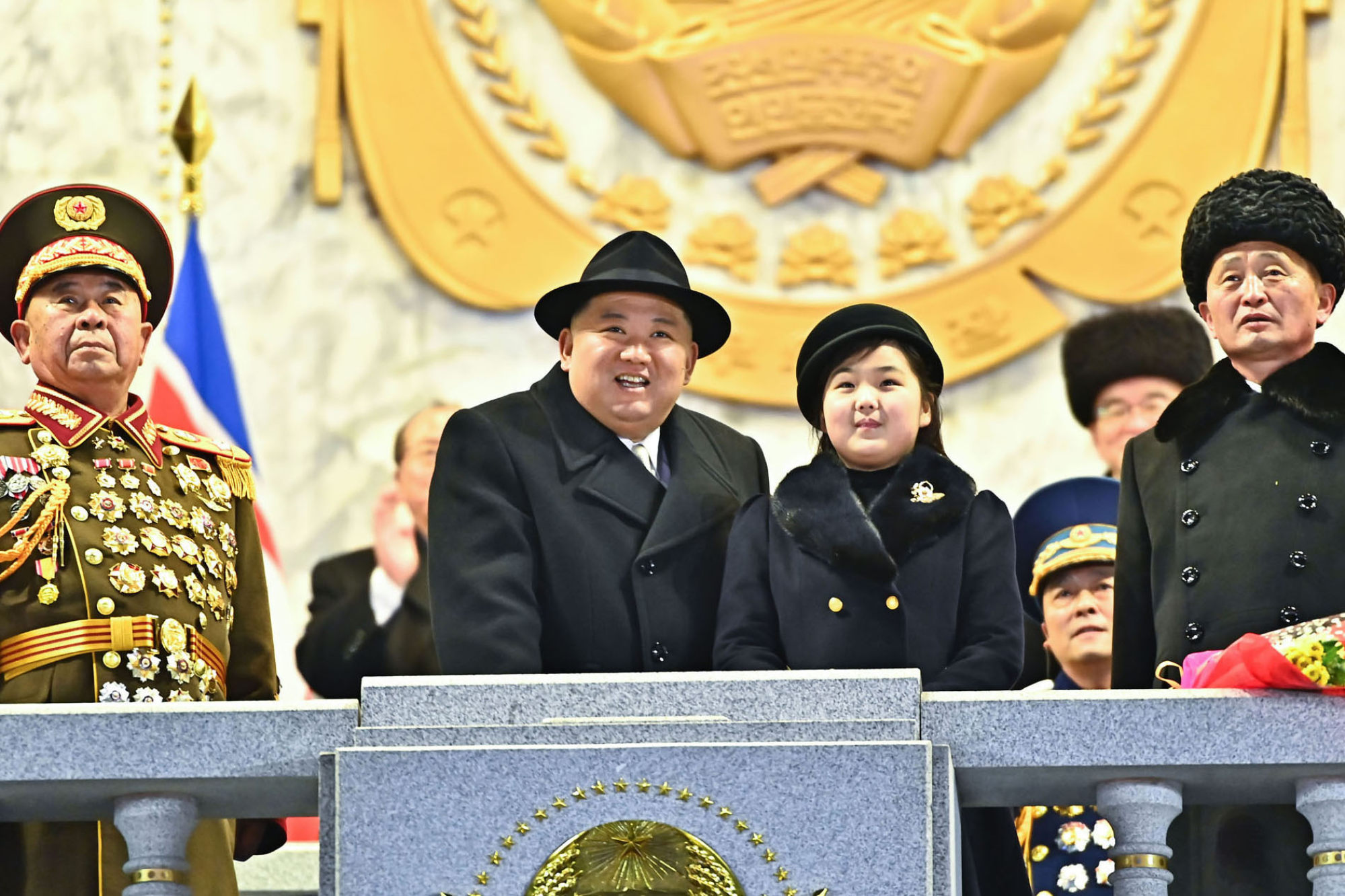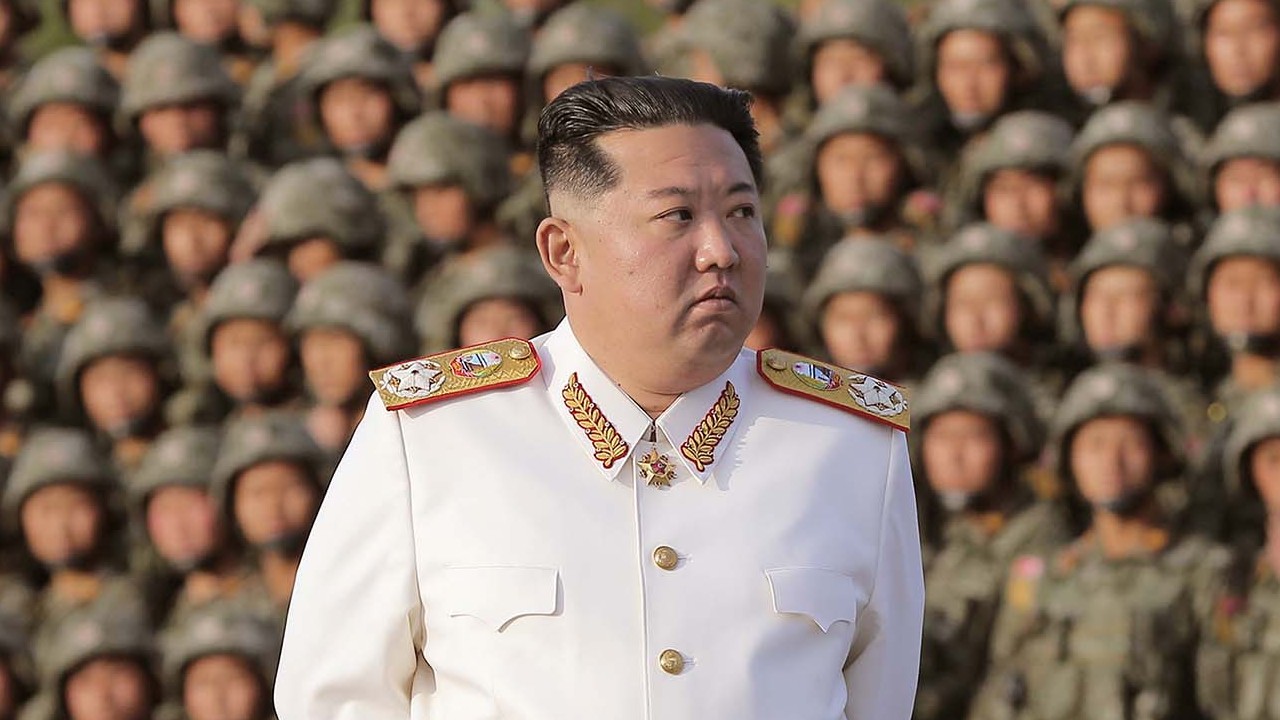
China urged to rein in North Korea as Kim displays new nuclear missiles in ‘war’ threat
- The North appeared to have displayed a range of new ballistic missiles, including its Hwasong-17 ICBMs believed to be a two-stage, road-mobile missile
- The potential for a military clash in the Korean peninsula will surge this year if China does not rein in Pyongyang, analysts say
“A column of ICBMs showing off our country’s maximum nuclear strike capabilities rolled into the parade ground, heated up with cheers from the crowd, overcome with pride and self-confidence,” the state KCNA news agency said.
“This is cumulatively more ICBM launchers than we’ve ever seen before at a North Korean parade,” Ankit Panda of the US – based Carnegie Endowment for International Peace said on Twitter.
North Korea also presented “tactical nuclear missiles” and long-range cruise missiles, in a demonstration of its “war deterrence and counter-strike capabilities”, it said.
Clad in a long black coat and wearing a felt hat similar to those worn by the country’s late founder Kim Il-sung, grandson Kim smiled and waved to the crowd as he watched the nighttime parade from the reviewing stand, flanked by top military and party officials.
According to satellite images, the North appeared to have displayed a range of new ballistic missiles, including its Hwasong-17 ICBMs on a mobile launcher.
Will US move to quash North Korean propaganda bring about a ‘revolution’?
The South also responded to Wednesday’s military parade, urging the North to “stop illegal nuclear and missile development” and to “promptly return to the denuclearisation negotiations”, foreign ministry spokesperson, Lim Soo-suk, told a regular briefing.
Pyongyang has recently hardened its rhetoric against Seoul, naming it an “undoubted” enemy and calling for an “exponential” increase in its nuclear arsenal.
Earlier this week, the North threatened its “toughest reaction” over a US move to expand joint military exercises with South Korea.
Presiding over a key party meeting on Monday, Kim called for the expansion of North Korea’s military capabilities “to cope with the prevailing situation and more strictly perfecting the preparedness for war”.

Since Kim took power following his father’s death in 2011, his regime has staged 13 military parades, including this latest one. Its previous parade was held in April 2022 to mark the 90th founding anniversary of the Korean People’s Revolutionary Army.
Pyongyang carried out 70 missile test launches last year, and at least one publicised test of a solid-fuel engine in December to develop a “new-type strategic weapons system”.
Yang Moo-jin, a political-science professor at the University of North Korean Studies in Seoul, said tensions were likely to rise further, especially when the South and the US conduct their annual military exercise on an expanded scale next month.
Washington has promised to deploy more US strategic weapons to South Korea, while the North has said it would launch its first military satellite in April and show off its capacities to fire ICBMs whose ranges could reach the US mainland.
Both Korean leaders are ratcheting up tensions instead of dialling down the temperature, Yang said. “It can’t be ruled out that a minor incident in inter-Korean sea or land borders could spark a military clash between the two sides, especially when the crab fishing season starts in April and May in the Yellow Sea.”
If China doesn’t want the regional instability of an inter-Korean arms race on its doorstep, it will have to do more to restrain Pyongyang in 202
Leif-Eric Easley, a professor at Ewha University in Seoul, said: “The high volume of tests at unusual times and from various locations demonstrate that North Korea could launch different types of attacks, anytime, and from many directions.
Also at stake are the lives and livelihoods of many North Koreans who lack access to adequate nutrition, winter heating, and modern medicines, as the North, rather than accept humanitarian help and comply with international law to re-engage in legal trade, continues to fire off millions of dollars in missiles, he said.
Analyst Cheong Seong-chang of the Sejong Institute also said military tension is likely to rise this year as the North unveiled the development of a new solid-fuel intercontinental ballistic missile as a policy goal and revealed its intention to launch a military satellite within the shortest period of time.
Additional reporting by the Bloomberg and Reuters



